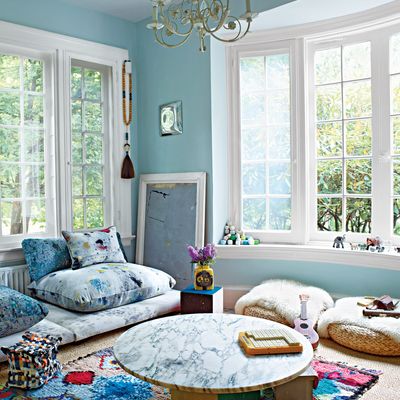
Molly Findlay and her husband, Everard, and their two daughters, Isadora and Eleanor, were torn about leaving Brooklyn. But once they made up their minds — “we wanted to try a new adventure,” Findlay says, and a favorite café, Zebulon, had just gone out of business — they decided to seize the opportunity to “invent a world of our own making, à la Team Zissou.” You do get the feeling that the family of hero-creatives in Wes Anderson’s The Life Aquatic might have gone for the house that the Findlays ended up with: a 1918 seven-bedroom in Nyack with multiple porches where no two rooms are alike. “We both loved it immediately,” Molly says. After they fixed a lot of broken windows, refinished the floors, and began hacking away at the overgrown grounds, it was basically fine.
Soon enough, though, they decided to intervene in the house a little more deeply, on the advice of a Thai Buddhist–monk friend who briefly lived with them. “He advised us to help all the spirits move along and make space for the new inhabitants,” Molly says. (Another friend, a shaman, “came along astrally to help them move to the light.”) The new décor took the form of neither quasi-period furniture nor hard modernist geometry. Instead, everything’s soft. The rooms have washes of sherbet color on the walls and squishy, family-friendly décor. In the living room, pink neon lighting glows over Mrs. Noodle Pillow, a set of upholstered soft tubes (of Findlay’s own design), 90 feet long altogether, that can be configured in myriad ways. (It holds the center of the room, with two more-conventional couches nearby.)
Certain aspects of suburban life took adjustment. The upkeep of the five-acre grounds was more than they were used to. But it’s become a family activity: Molly and Everard’s eldest daughter, Isadora, has become an avid beekeeper (très Brooklyn!), and the trees on the property have become members of the family, as everyone has studied up on the various types and their properties. Their appreciation of the creative community in Nyack even encouraged the Findlays to establish an artists’ organization called Mother of Thousands. (Everard describes it as “doing infrastructural advocacy,” meaning that it brings artists and scientists and people in other lines of work together for special projects, akin to artistic Happenings.) Leaving town also had one unexpected effect: “The move has invigorated our relationship with New York in a way. We actually go out more in New York City now to specific events, and friends come here for sleepovers.” Spirits out; guests in.
*This article appears in the Winter 2017 issue of New York Design Hunting.
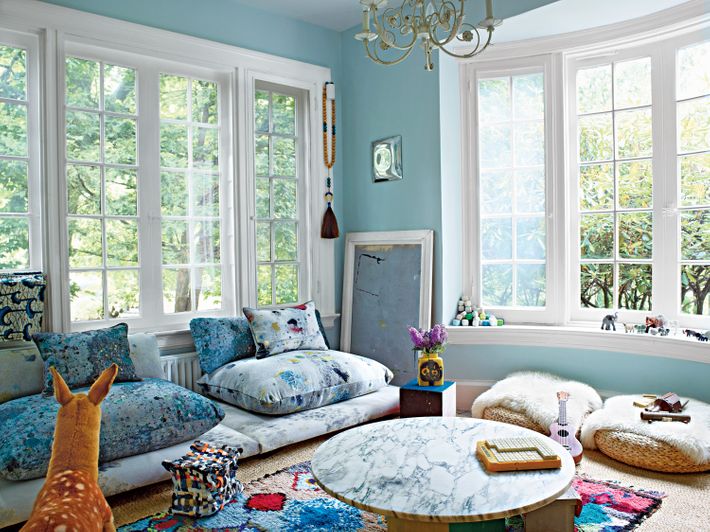
The breakfast-room furniture is low to the ground, with Chiclet seats that Molly Findlay designed. Made of stacked pillows, it’s upholstered in “Dropcloth,” by Martyn Thompson. The small mirrored art piece came from the Williamsburg shop Mc & Co., now closed. The paint color is “Borrowed Light,” by Farrow & Ball. Findlay made the colorful blocks piled in the window corner: “They’re called Anxiety Cubes — they cause and relieve anxiety simultaneously” as you handle them. The low marble table was a gift from her friend Carl Chaffee, who had a store in Williamsburg.
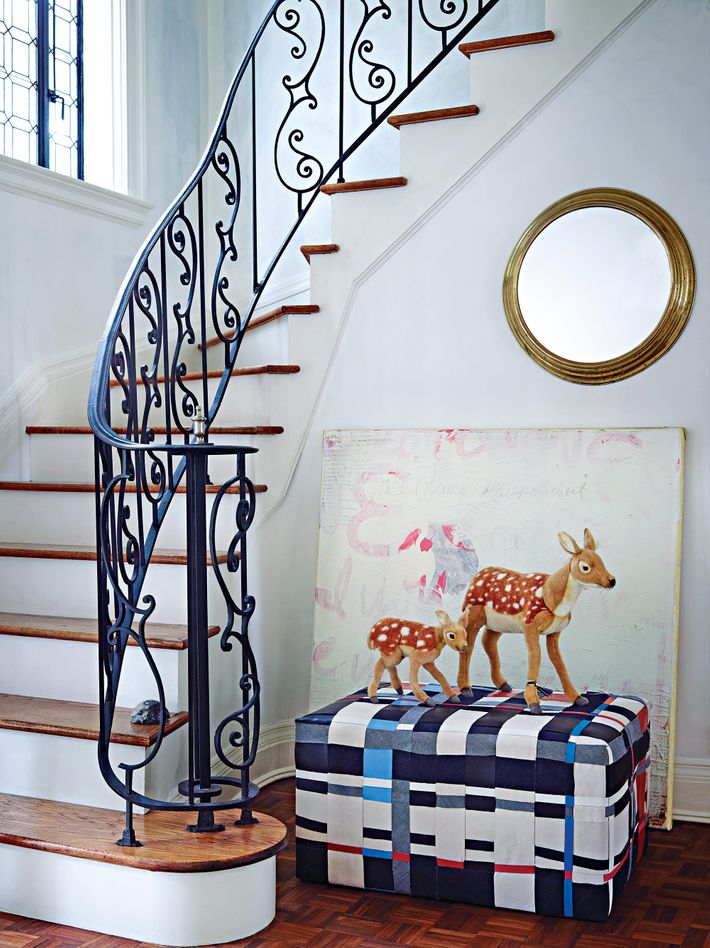
The ottoman, covered in woven fabric and vinyl, is by Ryan Schaefer.
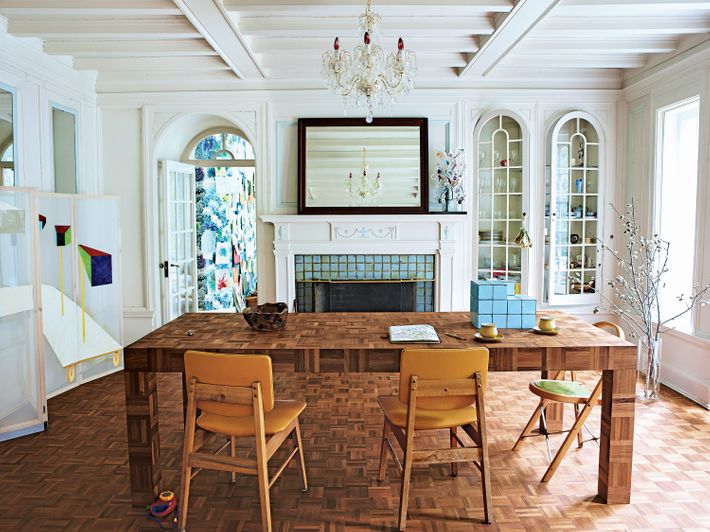
The painted screen is by the artist George Venson. On the kitchen wall, art by the kids. The blue tiles surrounding the fireplace are original to the house. The blue ceramic cubes on the table are by another artist friend, Courtney Smith. The glass sculpture on the mantel is by Chris Wolston. The Parterre table was designed by Molly and fabricated by Gregory Rukavina. “We made it from extra parquet so it appears to extend from the floor.”
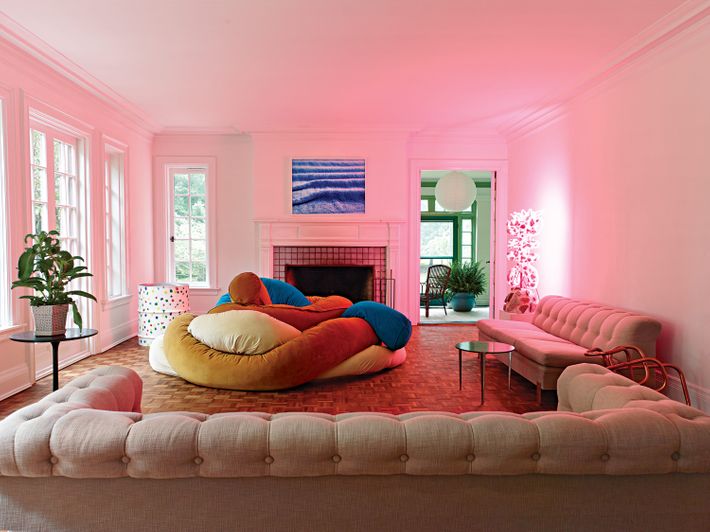
The artwork is by Chris Gentile, who makes sculptures and then photographs them. The painted polka-dot drum is by Olaf Breuning, created for a Trinidadian benefit project that Everard runs. The big knot at the center of the room is called Mrs. Noodle Pillow, designed by Findlay and configurable in any manner of shapes. That pink neon glow comes from the Chris Wolston–designed lamp by the door. The two sofas are from Pace. Between them is a junk-shop sculpture Findlay had replated.
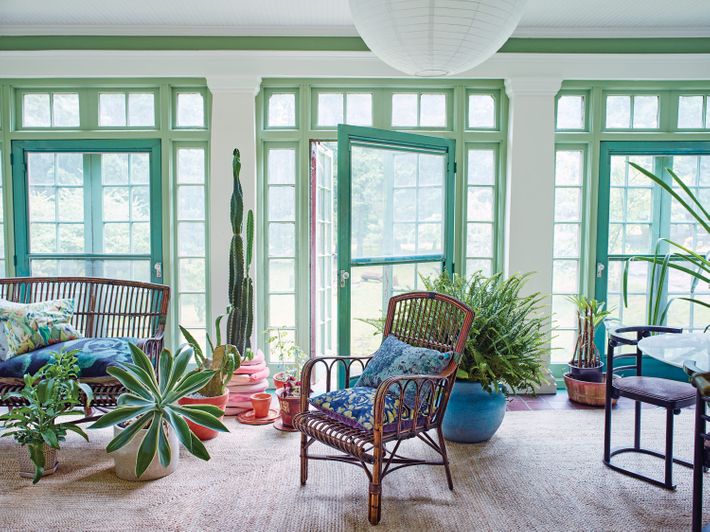
The paint colors are appropriate to 1918, when the house went up. “Apparently Charles Lindbergh once landed his plane in our meadow,” Findlay says. “And before the house was here, the land was home to a small abbey.” The ceramic-coil cactus pot was made by an artist friend, Misha Kahn. The rattan furniture came from an estate sale nearby.
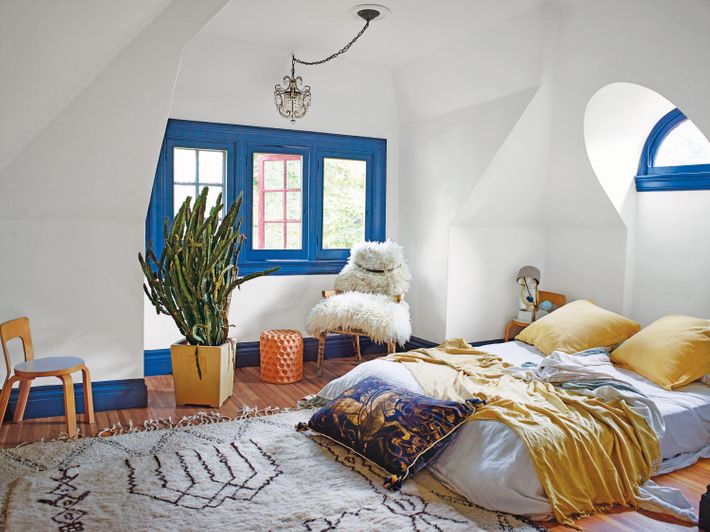
The geometry of the architecture is enough design for the winter bedroom, with a simple bed and a Berber wool rug the couple bought in Marrakech. The vintage chair is by Alvar Aalto for Artek. Below the window is another Wolston piece, this one in terra-cotta.
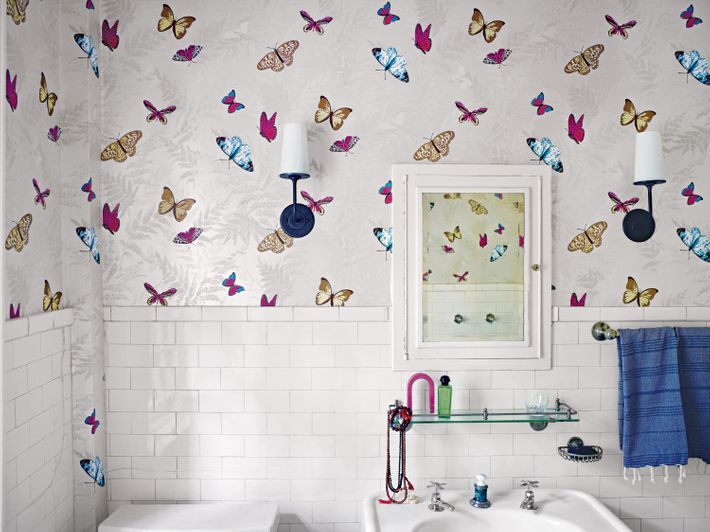
That wallpaper! It’s “Farfalla,” by Nina Campbell.





